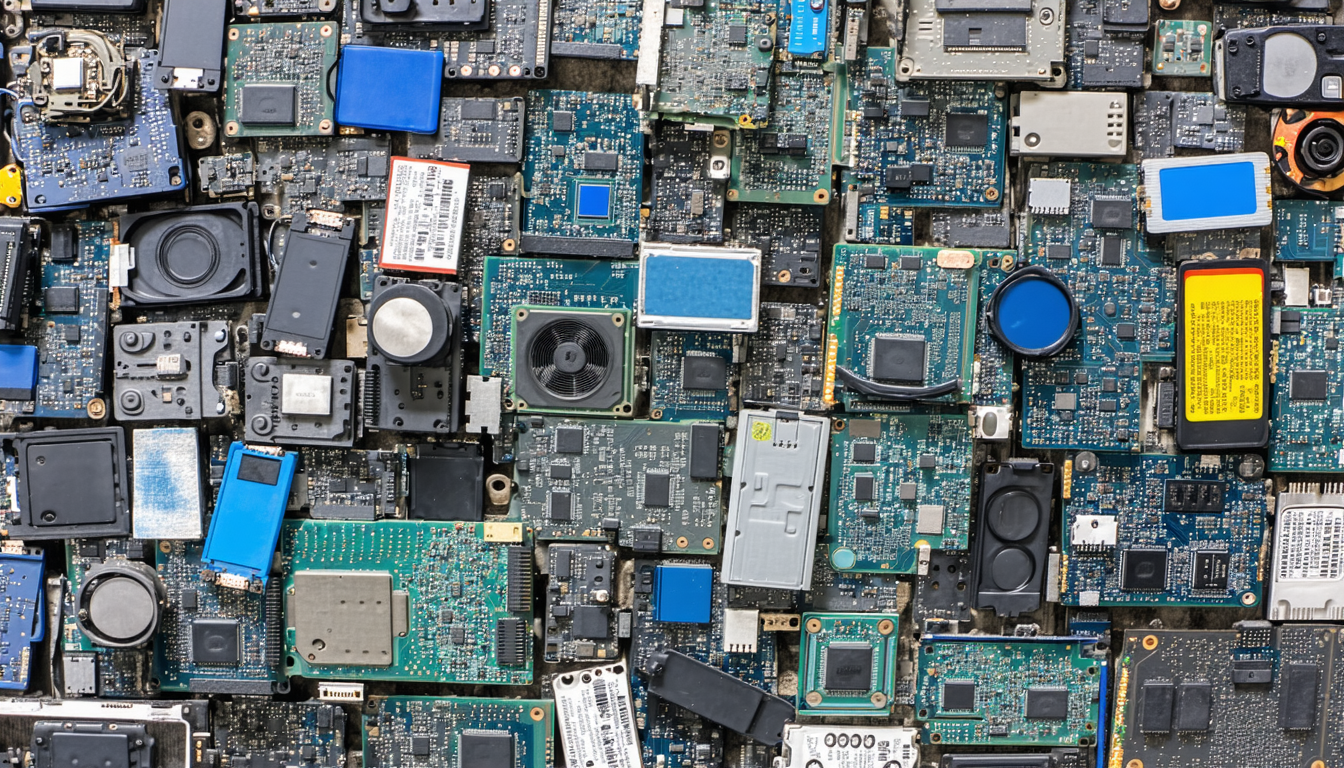Introduction
In an era dominated by technology, electronic waste, or e-waste, has become a pressing environmental challenge in the United States. With millions of devices discarded annually, the e-waste disposal process is under scrutiny for its impact on public health and the environment. This article delves into the latest developments in e-waste management, exploring current practices, regulatory updates, and innovative solutions. From recycling challenges to policy shifts, we uncover how stakeholders are addressing this growing issue and what it means for a sustainable future.
The Scale of E-Waste in the U.S.
The United States generates approximately 6.9 million metric tons of e-waste each year, according to a 2022 report by the Environmental Protection Agency (EPA). This includes discarded smartphones, laptops, televisions, and other electronic devices. However, only about 15-20% of this waste is recycled properly, with the rest often ending up in landfills or being exported to developing countries. Improper disposal releases toxic substances like lead and mercury into the environment, posing risks to ecosystems and human health.
The sheer volume of e-waste highlights the urgent need for effective management systems. As technology evolves rapidly, devices become obsolete faster, exacerbating the problem. Consumers and businesses alike are key players in ensuring responsible disposal practices.
Key Steps in the E-Waste Disposal Process
The e-waste disposal process in the U.S. involves several critical stages aimed at minimizing environmental harm. These include collection, sorting, dismantling, and recycling or disposal. Here’s a breakdown of the process:
- Collection: E-waste is gathered through drop-off points, municipal programs, or retailer take-back initiatives. Some states mandate producer responsibility programs where manufacturers manage end-of-life products.
- Sorting and Dismantling: Collected items are categorized by type and material. Hazardous components like batteries are removed to prevent contamination.
- Recycling: Valuable materials such as gold, silver, and copper are extracted for reuse. Specialized facilities use advanced techniques to recover these resources.
- Safe Disposal: Non-recyclable or hazardous waste is disposed of in compliance with federal and state regulations.
Despite these steps, challenges remain due to inconsistent state laws and limited public awareness about proper disposal methods.
Regulatory Landscape and Recent Updates
The U.S. lacks a comprehensive federal law governing e-waste disposal, leaving regulation largely to individual states. As of 2023, 25 states have enacted e-waste recycling laws, often requiring manufacturers to fund collection and recycling programs. For instance, California’s Electronic Waste Recycling Act imposes fees on certain electronics to support recycling efforts.
A significant development came in early 2023 when the EPA announced plans to strengthen guidelines for e-waste exports. According to EPA spokesperson Jane Harper, “Ensuring that e-waste is managed responsibly both domestically and internationally is a priority to protect vulnerable communities from toxic exposure.” This move aims to curb illegal dumping in countries with lax environmental standards.
Impact on Stakeholders
The e-waste disposal process affects various groups, from consumers to policymakers. For individuals, improper disposal can lead to data security risks if personal information isn’t wiped from devices before discarding them. Businesses face compliance costs but also opportunities in adopting sustainable practices that appeal to eco-conscious customers.
Environmental organizations advocate for stricter regulations and greater corporate accountability. Meanwhile, recyclers struggle with the high costs of processing complex electronics. Balancing economic viability with environmental responsibility remains a core issue for the industry.
Innovations Shaping E-Waste Management
Technological advancements are transforming how e-waste is handled in the U.S. Automated sorting systems using artificial intelligence are improving efficiency at recycling facilities. Additionally, companies are exploring urban mining—extracting valuable metals from old electronics—as a sustainable alternative to traditional mining.
According to Dr. Emily Carter, an environmental scientist at Stanford University, “Innovations in recycling technology could reduce our reliance on raw materials while tackling the e-waste crisis.” Such progress offers hope for a circular economy where electronics are reused rather than discarded.
Future Implications and Conclusion
The e-waste disposal process in the United States stands at a crossroads. With growing public awareness and technological innovation, there’s potential for significant improvement in recycling rates and regulatory frameworks. However, without unified national policies, disparities between states will persist, hindering progress.
The implications extend beyond borders as exported e-waste impacts global communities. A collaborative approach involving government, industry, and consumers is essential to address this challenge. By prioritizing sustainable practices today, the U.S. can lead the way in managing electronic waste for a cleaner tomorrow.
Frequently Asked Questions (FAQ)
1. What qualifies as e-waste?
E-waste includes discarded electronic devices like smartphones, computers, printers, and household appliances that are no longer functional or wanted.
2. Where can I dispose of e-waste in the U.S.?
Many states offer designated drop-off locations, retailer take-back programs, or municipal collection events. Check local government websites for nearby facilities.
3. Is it illegal to throw electronics in regular trash?
In states with e-waste laws, such as California and New York, disposing of electronics in regular trash is prohibited due to environmental hazards.
4. How can I ensure my data is safe before disposal?
Before discarding devices, perform a factory reset or use data-wiping software to remove personal information. Consider professional services for added security.
5. Why is proper e-waste disposal important?
Proper disposal prevents toxic substances from contaminating soil and water, protects public health, and conserves valuable resources through recycling.

